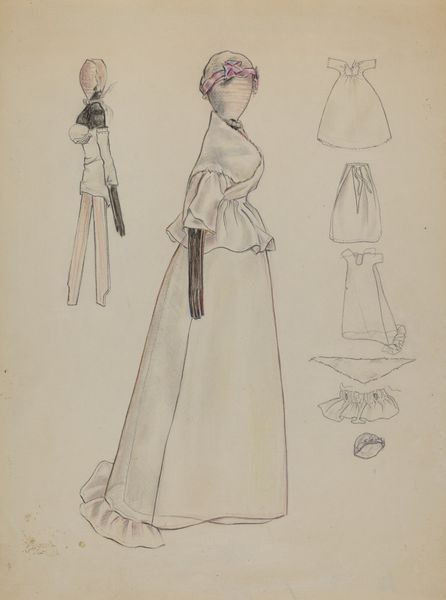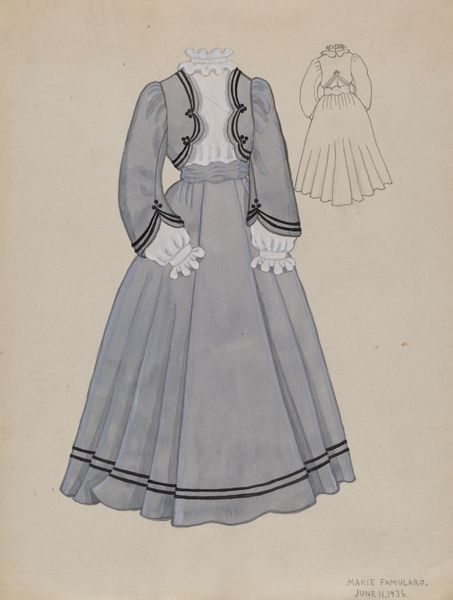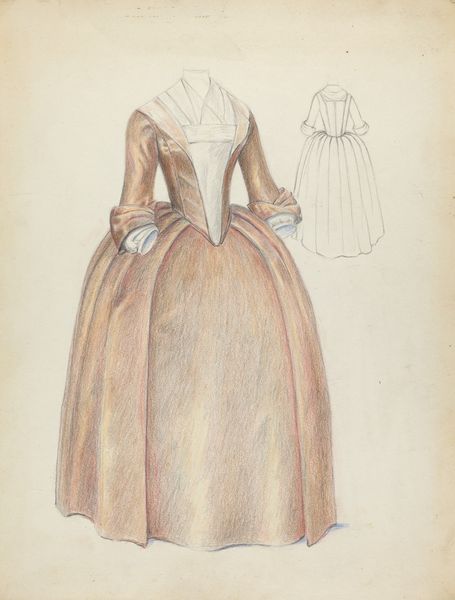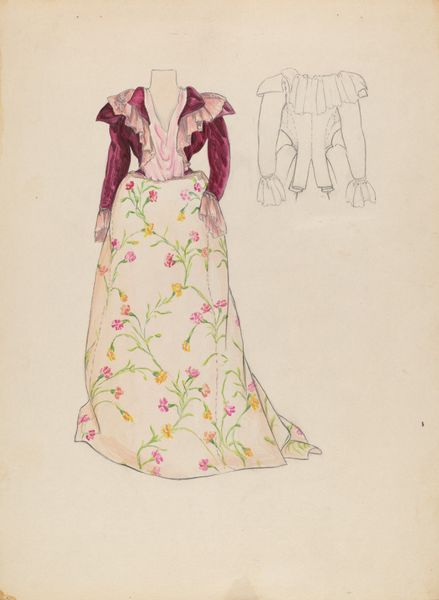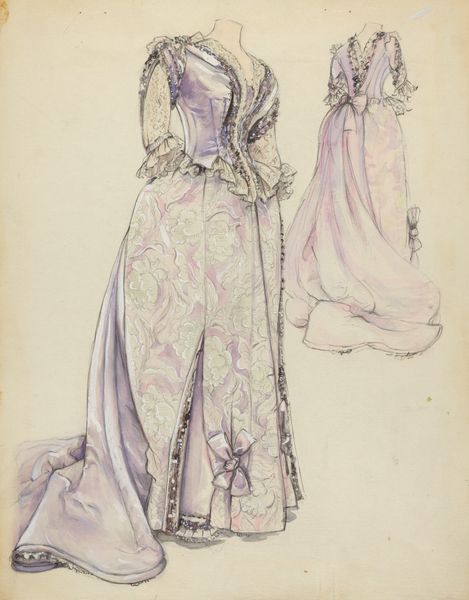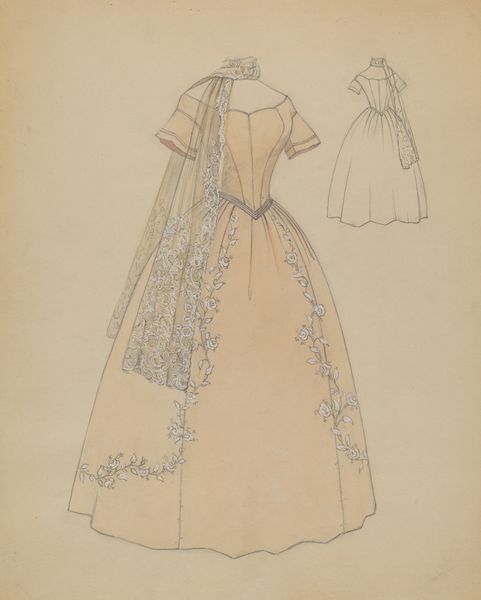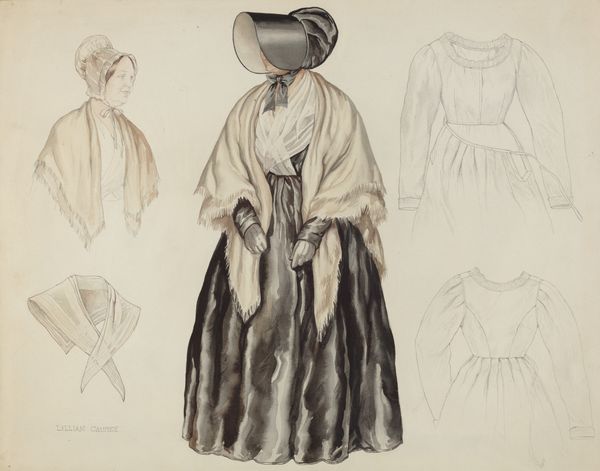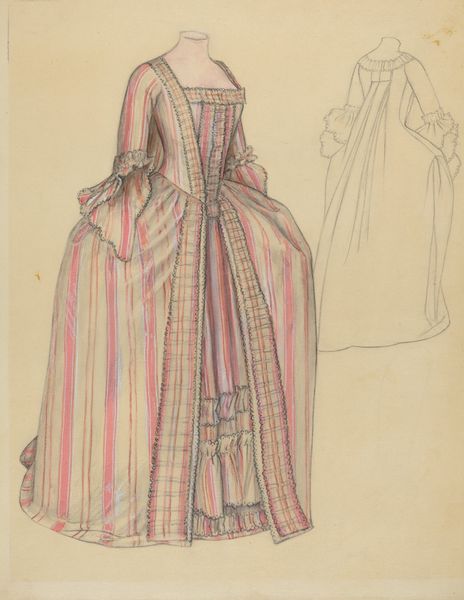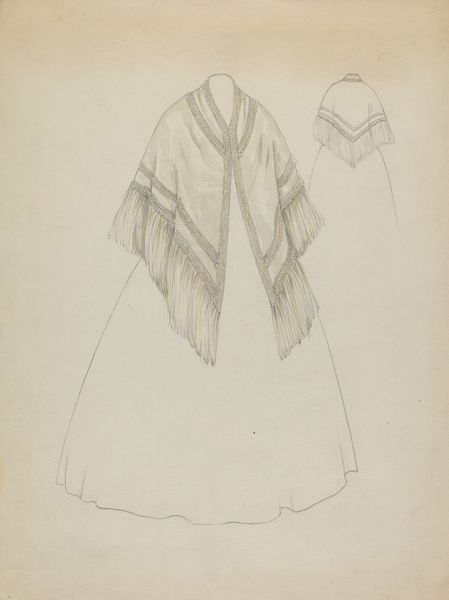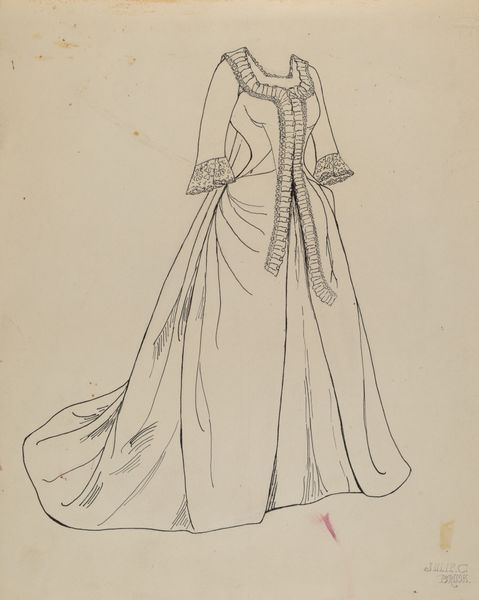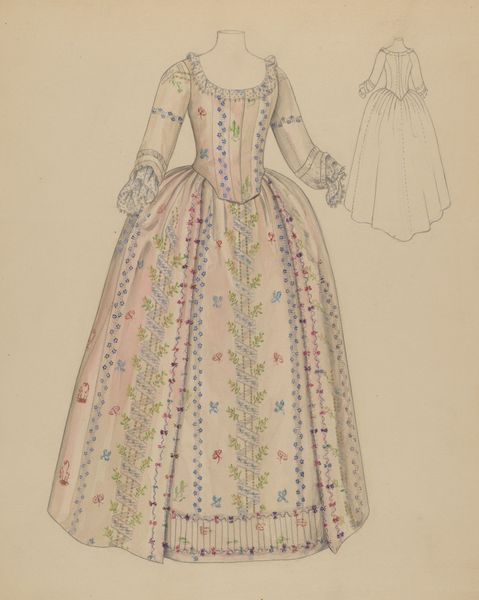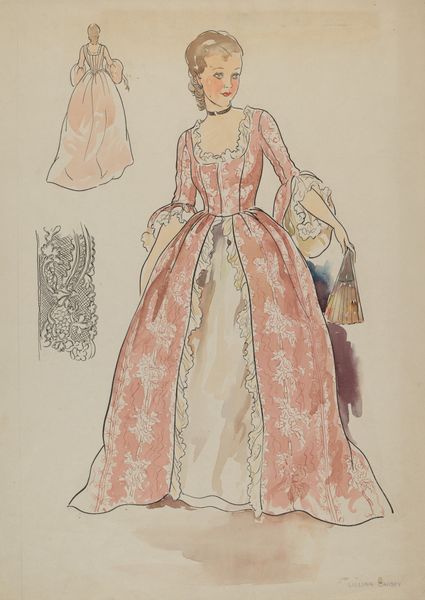
drawing, watercolor
#
portrait
#
drawing
#
pencil sketch
#
watercolor
#
genre-painting
Dimensions: overall: 55.9 x 45.4 cm (22 x 17 7/8 in.)
Copyright: National Gallery of Art: CC0 1.0
Editor: This watercolor drawing, *Quaker Doll*, was created by Gwyneth King sometime between 1935 and 1942. The subject matter has a quiet, almost antiquated feel to it. There is something haunting about how a drawing can memorialize everyday life and cultural practices of a group of people. What symbolism or stories do you believe are encapsulated in an image like this? Curator: It's interesting how you picked up on the haunting aspect, because that's exactly where my mind goes too. The Quaker doll isn’t merely a representation; it embodies the cultural memory of a specific group, carrying generational beliefs, values, and aesthetics. The doll-like figure immediately references childhood, safety, innocence and naivete, but those values may be interrogated, if we acknowledge this Quaker woman’s dress as culturally and psychologically significant. Consider the muted colors of her dress, and the modesty of her garments which tell us about their emphasis on spiritual introspection, simplicity, and pacifism. These beliefs contrast drastically with external flamboyance or luxury. Editor: That's a great point. The attire acts as a kind of emblem for their beliefs. It’s interesting how this resonates, especially during wartime, because of its anti-war message and its gentle nature. Curator: Exactly! It is about recognizing cultural continuity in visual symbols: quiet resistance in a loud world, simplicity and inner peace despite external pressures. What does the doll elicit in *you* as a viewer, beyond the history or the cultural markers we can identify? Editor: It feels like an intimate snapshot, like catching a glimpse into someone’s private world. It highlights the emotional resonance of ordinary objects, transformed by cultural context. I’ll definitely think about objects having power of resistance now. Curator: Precisely. Visual culture encodes more than meets the eye; it holds the weight of cultural and individual memory. It challenges us to examine, critique, and learn from it.
Comments
No comments
Be the first to comment and join the conversation on the ultimate creative platform.
